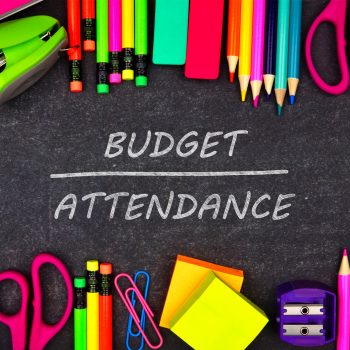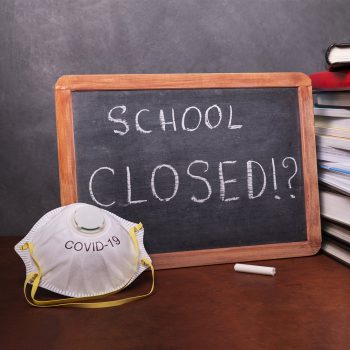
2020-21 School Year: What Will Distance Learning Look Like?
This is the second in a series of updates where we delve into the various instruction, attendance, and accountability provisions being implemented in response to the ongoing COVID-19 Pandemic for the 2020-21 school year. Yesterday, we provided an analysis of the average daily attendance (ADA) hold-harmless for the 2020-21 school year and ongoing efforts to address the impact the hold-harmless will have on growth districts. Today’s update will look at what will be expected of school districts, county offices of education, and charter schools that decide to offer distance learning during the 2020-21 school year, as well as some outstanding issues that we are working to clarify.
What are the options for providing instruction for the 2020-21 school year?
There will be three options to provide instruction for the 2020-21 school year: (1) in-person instruction, which could be similar to traditional seat-based instruction; (2) learning at a distance; or, (3) a hybrid of in-person and learning at a distance. As we will discuss below, the state has indicated a policy preference for in-person learning, appears to expect that hybrid instructional programs will be common in 2020-21, and will allow distance learning exclusively under limited circumstances.
It is important to note that for the 2020-21 school year, LEAs are able to provide traditional instruction (and take attendance) through seat-based programs or offer instruction at a distance under two attendance accounting methodologies: traditional Independent Study (IS) and now through Distance Learning (for 2020-21 only). At first glance, IS and Distance Learning are similar, but they will have different conditions of apportionment that will be enforced through annual independent audits. The public process for developing audit guidelines for Distance Learning has just begun and therefore is not yet completely clear. We are participating in that process and will continue to provide additional advocacy, analysis and guidance. The state’s only resource for LEAs seeking guidance on IS compliance is through the California Consortium for Independent Study (CCIS).
The specific parameters and requirements for a distance learning program can be found in Section 34 of the K-12 education budget trailer bill, SB 98, which was signed by Governor Newsom last night. In his signing message for SB 98, the Governor expanded on the reasoning behind the distance learning structure described in the bill, stating:
“It is the expectation of the state that if a school offers hybrid or mixed delivery instructional models, it will do so through a framework of maximum teacher-student engagement, with plans in place to ensure that no child falls through the cracks. This balance of flexibility for schools and instructional accountability is essential to navigate the COVID-19 pandemic while minimizing the impact of educational disruption on student learning.”
When can distance learning instruction occur?
When SB 98 was initially released, there was confusion around whether or not schools would be able to offer hybrid learning models that consisted of both in-person and distance learning instruction. The confusion in part stemmed from the fact that the language seemed to explicitly require a local educational agency (LEA) to provide in-person instruction but only allow distance learning in specific circumstances.
However, as previously reported, we have confirmed with legislative staff that the intent of the language was not to prohibit an LEA from operating a hybrid learning model but, rather, to limit when an LEA may offer a distance learning-only model. Additionally, both Senator Holly Mitchell (D-Los Angeles), the Chair of the Senate Budget Committee, and Assembly Member Phil Ting (D-Los Angeles), Chair of the Assembly Budget Committee, submitted letters to the Senate and Assembly Journals over the past week to provide additional clarification around their intent behind the distance learning language. A letter to the journal is a formal way of expressing the intent of a bill after the bill has been passed and is often used in lieu of running additional legislation to provide clarification.
In part, the letters, which can be read in full here and here, state:
“This section is not intended to prevent an LEA from adopting a distance learning, hybrid, or mixed-delivery instructional model to ensure safety. Instead this section is intended to grant flexibility to an LEA to determine what instructional model the LEA will adopt during the COVID-19 Pandemic, taking account the needs of their students and staff, and their available infrastructure, provided the model adheres to an applicable state or local public health order or guidance.”
Under SB 98, an LEA must meet one of two circumstances in order to be able to offer distance learning:
On an LEA or schoolwide level as a result of an order or guidance from a state public health officer or a local public health officer.
Similar to whether or not an LEA could offer a hybrid learning model, there was also initial confusion around what kind of public health guidance might be necessary in order to meet the first criteria for distance learning. Some initially thought that it required guidance beyond that already issued by the California Department of Public Health (CDPH) and which explicitly authorized a specific school to provide distance learning. The letters address this confusion, stating that the provision “is not intended to require an LEA to seek out or receive approval from a state or local public health officer prior to adopting a distance learning model.” The letters go on to say that the intent was to give LEAs flexibility when determining their needs in an instructional model but to make sure the model still adheres to an applicable state or local public health order or guidance.
To this end, the most recent statewide guidance from the CDPH, which can be found here, can be used to help guide an LEA as it builds out its instructional models. For example, the CDPH’s School Guidance recommends keeping students “in groups as small and consistent as practicable” and that schools “maximize space between seating and desks” in classrooms. These recommendations could be used by an LEA to explain why it is offering a school-wide hybrid model; using a mix of in-person and distance learning instruction helps limit the number of students in a classroom at one time, better ensuring students and staff can appropriately social distance.
For students who are medically fragile or would be put at risk by in-person instruction, or who are self-quarantining because of exposure to COVID-19.
This was another area where there was a lot of initial confusion, with many LEAs concerned that the language seemed to provide very limited instances for when individual distance learning would be allowed. However, the language is much broader than it appears on its face, a fact confirmed by the Senate and Assembly letters. In the letters, Senator Mitchell and Assembly Member Ting note that “could be put at-risk by in-person instruction” is not defined in SB 98 and that, rather, the provision “contemplates that LEAs may provide distance learning to students with varying circumstances – whether the student has health conditions, family members with health conditions, cohabitates or regularly interacts with high-risk individuals, or otherwise identified as “at-risk” by the parent or guardian.”
Additionally, the letters state that this lack of definition means that an LEA is not required to verify that a request for distance learning by a parent or guardian meets a certain standard. However, while the language does not require documentation for why a student is receiving distance learning full time, we would recommend keeping some kind of record of why a student is participating in distance learning only, if only out of an abundance of caution. This does not need to be a note from a medical professional but just maintain simple record keeping that indicates the reason a student was kept out of in-person instruction.
Ultimately, no matter an LEA’s reasoning for offering distance learning, one thing is clear: an LEA may not offer distance-learning without also offering an option for in-person instruction. One way to avoid this would be to offer distance learning as one of other instructional options for parents to choose from, along with in-person instruction. As long as an LEA offers in-person instruction as an option, our understanding is it would meet the intent of the law, even if no parent exercises that option.
What must distance learning include?
SB 98 requires all LEAs to develop a plan for their distance learning programs. The plan must include a number of things, including how an LEA will provide a continuity of instruction, particularly if a student must transition from in-person instruction to distance learning; a plan for ensuring access to devices; and what additional supports will be provided for students with unique needs, like English learners and students with exceptional needs.
Additionally, an LEA’s distance learning program must comply with all the following requirements:
- An LEA must confirm or provide access for all students to connectivity and devices, so all students are able to participate in the educational program and complete assignments
- Content must be aligned to grade level standards and provided at a level that is substantially equivalent to in-person instruction
- An LEA must provide students with daily live interaction with teachers and peers for purposes of instruction, progress monitoring, and maintaining school connectedness. (However, if daily live interaction is not feasible, an LEA’s governing board may adopt, with parent and stakeholder input, an alternative plan for frequent live interaction that provides a comparable level of service and school connectedness)
- An LEA must provide academic and other supports for students who are not performing at grade level or need additional student services, like mental health services
- Special education and related services must be provided with any accommodations necessary to ensure a student’s individualized education program (IEP) can be implemented in a distance learning environment
- An LEA must provide designated and integrated instruction in English language for English learners, including the assessment of English language proficiency and the ability to reclassify as fully English proficient.
SB 98 also provides that an LEA must continue to provide meals to any student who is eligible for a free and reduced-price meal, regardless of whether or not the student is receiving in-person or distance learning instruction, for every day of the scheduled school year. Last week, the U.S. Department of Agriculture extended, through the end of the 2020-21 school year, a number of waivers to provide schools with the necessary flexibility to continue to provide meals even when a student is not scheduled to be on campus. Specifically, these flexibilities will allow for the provision of meals outside the normal meal pattern requirements, allow meals to be served outside of group settings and standard times to allow for alternative service options, and allow parents or guardians to pick up meals for students engaged in distance learning.
How will instructional minutes be calculated if we offer distance learning?
An LEA will be able to meet the necessary instructional minute requirements for a given schoolday through in-person instruction, distance learning, or a combination of the two. For in-person instruction, instructional minutes will be based on time spent under the immediate physical supervision and control of a certificated employee of the LEA. For distance learning, instructional minutes will be based on the time value of assignments as determined and certified by a certificated employee of the LEA. For a schoolday where a student receives both in-person and distance learning instruction, the time under immediate physical supervision will be combined with the time value of assignments in order to meet the instructional minute requirements.
When developing your instruction model, keep in mind that in order for any instruction to count towards the instructional minutes requirement, it must be provided by a certificated employee of the LEA. This means that any instruction provided by non-certificated staff or by a vendor will not count toward an LEA’s instructional minute requirement.
Will an LEA be required to track a student’s participation in distance learning?
SB 98 does lay out how an LEA must still track and monitor a student’s daily engagement in distance learning. Every LEA will be required to document the daily participation of every student for each schoolday during which distance learning is provided. This participation can be met through, among other things, completion of regular assignments and contact between the student and an LEA employee. This daily participation must then be included in the student’s weekly engagement record, which will also document whether a student was engaged in synchronous or asynchronous distance learning for any part of a schoolday and track the student’s assignments. Each school will also be required to regularly communicate with parents and guardians regarding their student’s academic progress.
Likely to address claims that students were not properly engaged through distance learning at the end of the last school year, SB 98 requires a student to participate daily in either in-person instruction or distance learning. If a student does not do so, that student will be deemed absent and an LEA will be required to document that absence and report it for purposes of its chronic absenteeism rates in its local control and accountability plan (LCAP). Every LEA will also be required to develop written procedures for how to reengage a student who is absent from distance learning for more than three schooldays or 60-percent of the instructional days in a school week. These procedures must at least include verification of current contact information for each enrolled student, daily notification to parents or guardians of absences, a plan for outreach from the school to determine the student’s needs and, when feasible, transitioning the student to full-time in-person instruction.
Additionally, while an LEA’s local control funding formula (LCFF) apportionment will be based on its 2019-20 ADA, failure by an LEA to meet the above requirements could subject an LEA to costly fiscal ramifications. SB 98 provides that if an LEA fails to track daily participation, complete weekly engagement records, or develop procedures for reengaging a student, the Superintendent of Public Instruction will withhold from the LEA’s LCFF apportionment an amount based on the percentage of days out of compliance and the LEA’s derived value of ADA. “Derived value of ADA” will differ between LEAs, depending on an LEA’s unduplicated count and the grade levels offered. Under this approach, LEAs with higher unduplicated counts could face a bigger hit to their LCFF apportionment than an LEA with fewer unduplicated students.
However, SB 98 provides that an LEA will not be penalized for non-compliant distance learning instruction provided before September 1, 2020. This leaves LEAs with only a small window of time to implement their distance learning programs before penalties could kick in. We will be working with the California Department of Education, the State Controller’s Office, Department of Finance, and the Fiscal Crisis Management Assistance Team to clarify audit guidance as soon as possible. We will share that guidance once its available.
- Posted by CCIS
- On June 30, 2020



0 Comments